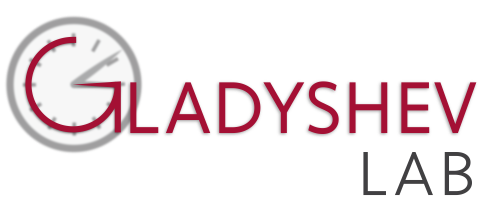2024 Articles
Griffin PT, Kane AE, Trapp A, Li J, Arnold M, Poganik JR, Conway RJ, McNamara MS, Meer MV, Hoffman N, Amorim JA, Tian X, MacArthur MR, Mitchell SJ, Mueller AL, Carmody C, Vera DL, Kerepesi C, Ying K, Noren Hooten N, Mitchell JR, Evans MK, Gladyshev VN, Sinclair DA. TIME-seq reduces time and cost of DNA methylation measurement for epigenetic clock construction. Nat Aging. doi: 10.1038/s43587-023-00555-2.
Moqri M, Herzog C, Poganik JR, Ying K, Justice JN, Belsky DW, Higgins-Chen AT, Chen BH, Cohen AA, Fuellen G, Hägg S, Marioni RE, Widschwendter M, Fortney K, Fedichev PO, Zhavoronkov A, Barzilai N, Lasky-Su J, Kiel DP, Kennedy BK, Cummings S, Slagboom PE, Verdin E, Maier AB, Sebastiano V, Snyder MP, Gladyshev VN, Horvath S, Ferrucci L. Validation of biomarkers of aging. Nat Med. doi: 10.1038/s41591-023-02784-9.
Ying K, Liu H, Tarkhov AE, Sadler MC, Lu AT, Moqri M, Horvath S, Kutalik Z, Shen X, Gladyshev VN. Causality-enriched epigenetic age uncouples damage and adaptation. Nat Aging. doi: 10.1038/s43587-023-00557-0.



